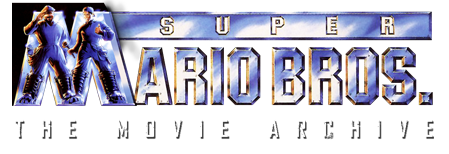Guest Editorial: The Appeal of The Gross: Tactility and Super Mario Bros.
Written by: Zoe Crombie (@CrombieZoe)
Posted: May 13, 2019
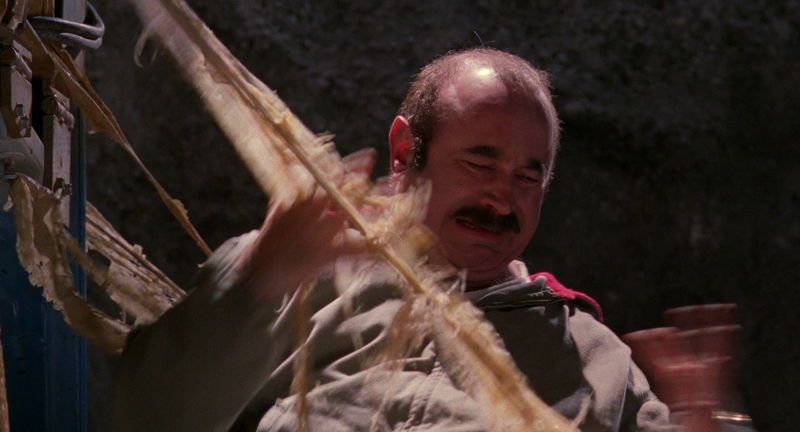
Bob Hoskins' Mario gets a dose of fungus in Super Mario Bros. (1993)
We as humans love attempting to rationalize the entertainment we enjoy, particularly in terms of how we respond to films. We can try to say that a maligned movie has been unfairly overlooked for a myriad of reasons: not hitting the right contemporary trends, containing subtext that many viewers wouldn’t pick up on, presenting a challenging new perspective, and more. But surprisingly often, the joy we derive from a film can’t be attributed to intellectual appreciation – sometimes, we just want to see something, slimy, visceral, and weird that hits us on a gut level. For this purpose, Super Mario Bros. is perfect, with its oddly grungy aesthetic that never shies away from taking the simplistic visuals of the earlier Mario games and twisting them into something more grotesque for the big screen experience.
The phenomenon of taking enjoyment in the gross is best explained by Linda Williams’ famous Film Bodies essay, which goes some way in justifying why people watch movies that bring them discomfort. While much of the essay focuses on melodrama and pornography, I feel as though the genre most relevant to Super Mario Bros. is horror, based on both the bizarre imagery and the disgusted reaction from reviewers in 1993. She claims that the disgusted reaction from viewers is generated by ‘excesses we wish to exclude’, most commonly in the form of violence, gore, and overt sexuality. By all accounts, Super Mario Bros. contains none of these elements, but the excess of its mise-en-scène still produced a comparable response in its audience.
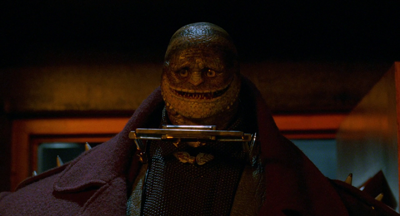 Super Mario Bros. is a film that emanates a strange tactility from the get-go. The setting of New York City, dark and relatively sanitized in the original arcade game, is given a full sensory potency, in both its prehistoric and 1990s mode. The thick fog and forests framed through blue blasts of lightning and dutch angles at the start of the film aren’t too dissimilar from the smog of the city and the visual overload of New York in general. And this is to say nothing of the huge, dank sets utilized in the film in its more surreal, later moments, the labyrinthine environment drawing you further into the excessive aesthetic of a twisted Manhattan.
Super Mario Bros. is a film that emanates a strange tactility from the get-go. The setting of New York City, dark and relatively sanitized in the original arcade game, is given a full sensory potency, in both its prehistoric and 1990s mode. The thick fog and forests framed through blue blasts of lightning and dutch angles at the start of the film aren’t too dissimilar from the smog of the city and the visual overload of New York in general. And this is to say nothing of the huge, dank sets utilized in the film in its more surreal, later moments, the labyrinthine environment drawing you further into the excessive aesthetic of a twisted Manhattan.
What inspired this article however, before I had even watched the film, was the design of the Goombas. Originally relegated to a background role, their designs allowed them a greater purpose and presence in the plot, allowing them to become one of the iconic images from the movie. Bear in mind that in 1993, the design of the Goomba as we know it today was not nearly so ubiquitous – a collection of pixels with no discernible real-life counterpart outside of game manuals poured over by early game geeks. Though later they became the lovably grumpy brown bipedal lumps we know today, their appearance in the movie was an early revision; tiny heads, huge bodies, and viscerally slimy skin. Somehow, by being simultaneously intimidating and off-putting, the creatures circle back round into intrigue, burning their way into your memory through their sheer, unabashed tactility.
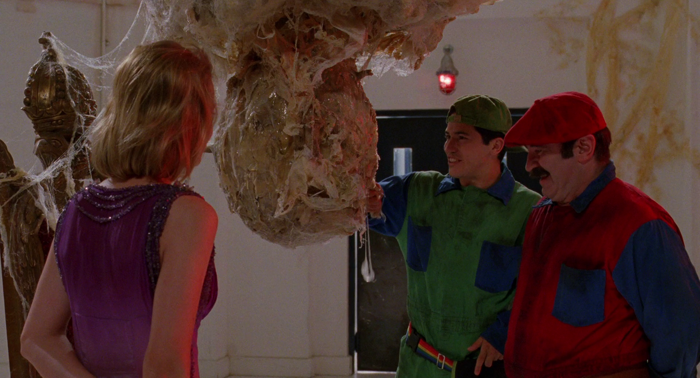
The highlight of Super Mario Bros.' weirdness: the de-evolved form of King Reznor
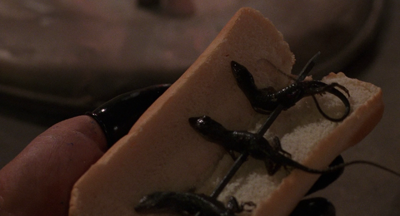
As previously stated, the reviews and reactions to the film – both contemporary and more recent – have been far from positive, but Super Mario Bros. has always succeeded in creating passionate responses. A 1993 review from the New York Times describes a certain de-evolved character as ‘memorably disgusting’. In an otherwise negative LA Times review, Michael Wilmington acknowledges ‘the sheer density and bravura of the production design’. The overwhelming influence of its excessive design has affected most who have dared to watch it, as reflected in how the sensory overload of the production design is brought up in significant retrospectives – the use of the word ‘stench’ in the title of a Guardian article on the film certainly evokes it.
Super Mario Bros. is, of course, not the only critically lambasted film to receive a latent fanbase; it fits as part of a pattern of these strange movies that only grow in popularity over time. David Lynch’s fever dream Dune, cult horror movies like Killer Klowns From Outer Space and gross-out comedies like Freddy Got Fingered all contain the parts of an aesthetic that has kept fans returning for decades after their original release. Indeed, the very existence of the site on which you’re reading this article proves enough about how this strange creation has endured past its apparent sell-by date. All in all, the film is a fine example of the proud history of gross, excessive cult cinema – just engage with your instincts, and trust the fungus.
-- Zoe Crombie
Zoe Crombie is a film critic from Lancaster, UK. She contributes to Film Inquiry, The Digital Fix, Girls On Tops, and City Countdown, and can be found on Twitter @CrombieZoe.
